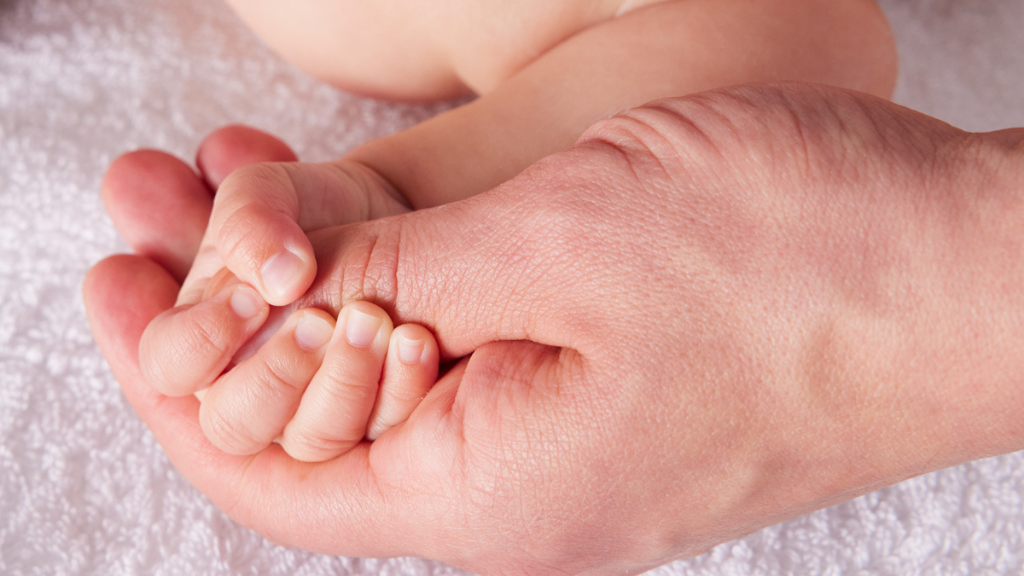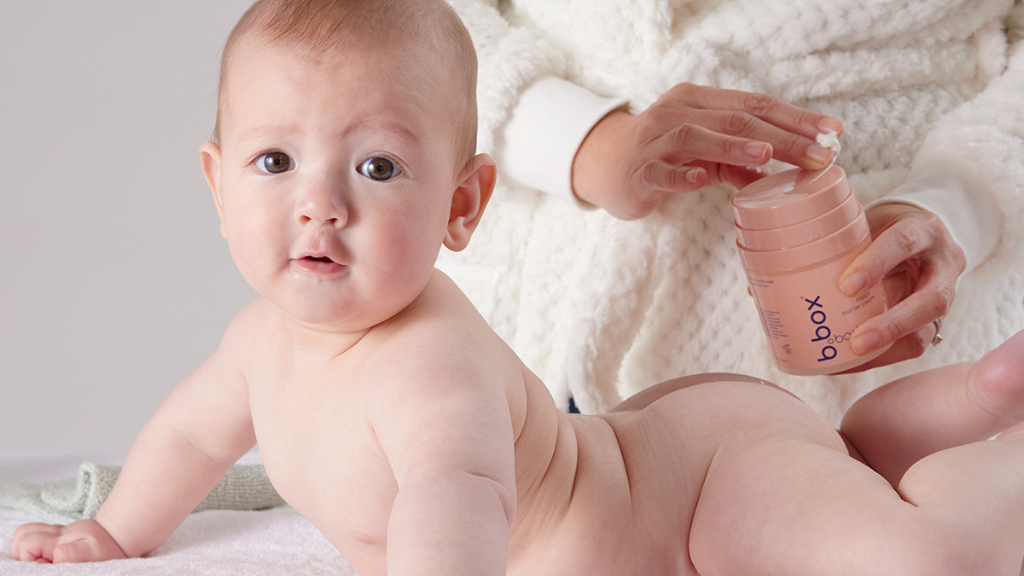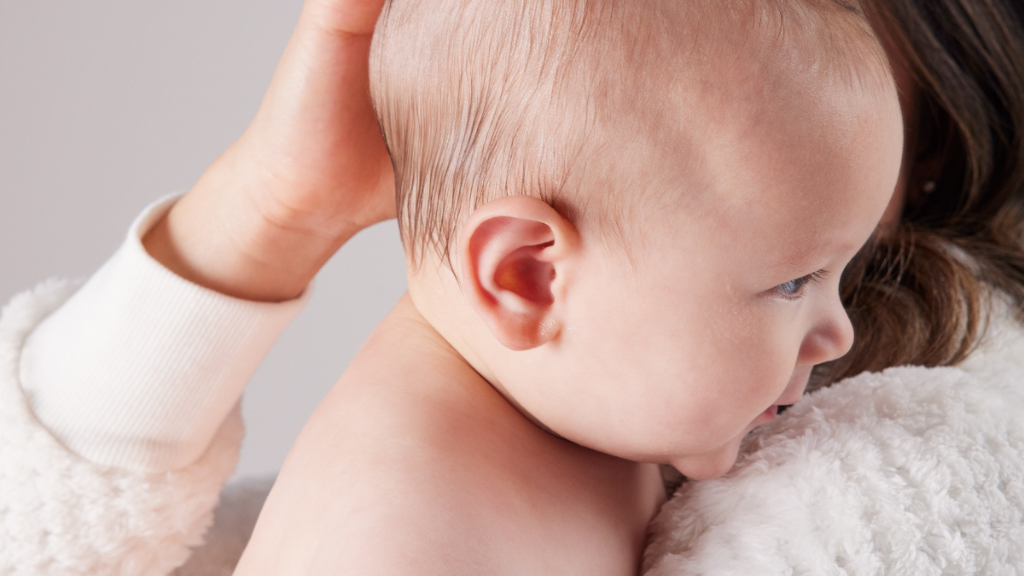5 Signs of Sensitive Skin in Babies
Oct 03, 2022
The skin of a newborn is known to be extremely delicate, and naturally more sensitive than the skin of older children or adults. This is because a baby’s skin barrier is commonly thin: and doesn’t fully develop until they are two years of age.

So, at some stage, it will be common for your bub to develop dry or slightly flaky skin and normal rashes after birth: from drool, or heat rash, cradle cap and the dreaded nappy rash! But if bub’s skin is consistently dry or flaky, or red and blotchy as they develop and grow, and perhaps reacting to things that touch it, it may be a sign that their skin is considered more sensitive and may need just a little more care and attention.
But hey, don’t fret yet folks. Whilst there can be many types and reasons for skin sensitivities, here are some common baby skin ailments and sensitive skin triggers to get you started. The symptoms can be similar and tricky to assess so, to delve deeper, we recommend speaking to your maternal child and health nurse, or local GP or pediatrician, for expert advice that is specific to your baby’s skin and conditions.
5 signs of sensitive skin in babies
1. heat rash
what it is
Heat rash is often referred to as a prickly, sweat rash— skin inflammation that develops when baby gets hot from the external environment or from over-dressing, with sweat getting trapped underneath the skin and eventually causing it to be red and bumpy. Heat rash can be more common in newborn babies because they have difficulty regulating their body temperature in the early days.
symptoms
Heat rash is made up of tiny red bumps that appear on the skin. It tends to appear first on the folds of baby’s skin. Interestingly, while you may suspect heat rash to be more common in the heat of Summer months, babies are actually known to get heat rash commonly in the Winter months, when mums, dads or caregivers may unknowingly bundle them up in too many layers or perhaps run the heater a little high from concern that bubs will get cold.
how to treat it
You can try soothing bub’s hot, irritated skin by keeping it airy and dry – staying cool and sweat-free is key!
- - Cool your baby’s skin with a cool bath or washcloth soaked in tepid water
- - Dress your baby in loose-fitting, light fabrics in both summer and winter to ensure they are comfortable and not over-heating
- - Use light blankets and layer as needed
- - You can try using a humidifier to hydrate the air in bub’s room
Heat rash will usually clear up within a week or so. But if bub’s skin doesn’t clear up, or appears to make bub uncomfortable, or starts to look worse or infected or is accompanied by a fever, then it is time to check in with your local GP or paediatrician for some advice.
2. cracked, chapped skin
what it is
Chapped skin is irritated, red and scaly, and can be a little painful for bub. As a grown up you might be able to relate with the feeling of chapped lips! Unfortunately, chapped skin can be a common occurrence and usually happens in winter with babies: when their little faces and hands are exposed to the cold and wind. Frequent handwashing and bathing can also cause chapped skin, particularly on the backs of hands and knees, and the scalp, to become dry and sore due to the water breaking down their sensitive skin barrier.
symptoms
Chapped skin is raised, red and scaly. While it isn’t typically itchy, skin may feel tight, it may peel or crack, and in severe cases may even bleed. Take note: young kids with chapped lips also often tend to lick them, resulting in saliva aggravating the skin around their mouths.
how to treat it
Cracked, chapped skin whilst stressful for folks usually just needs a little extra care. You can try to:
- - Reduce the number of baby’s baths. Perhaps instead of daily baths, you can wash bubs three times a week in tepid water + pat their skin gently to dry – never rub as it may aggravate the gentle skin layer.
- - Avoid harsh shampoos, cleansers and lotions that can dry out the skin or cause further irritation. Look for natural cleansers and moisturisers or perhaps a soap-free alternative while skin is particularly sensitive and delicate.
- - Keep baby’s face + skin folds clean and dry from saliva, dribbled milk or sweat.
- - Apply extra moisturiser in the morning to give skin a hydration boost.
Similar to heat rash, cracked or chapped skin should clear up within a week or so. But if baby’s skin starts to look worse or gets infected, or is accompanied by a fever then it is time to check in with your local GP or paediatrician for some advice.

3. contact dermatitis
what it is
Contact dermatitis causes an itchy, allergic, and sometimes painful skin rash that appears after bub’s skin meets an irritant or allergen. It commonly looks red, oozy, and scaly—and is often found in a particular area or section of the body that has come into contact with the irrritant. Irritants may include perfumes, detergents, soaps, citrus, cleaners, or even just saliva. Interesting fact; a common cause is nickel, which surprisingly, can even be found in onesie snaps! The rash usually lasts as long as the trigger is present, but a severe reaction may need some help from a professional.
symptoms
It can vary greatly depending on the severity of the reaction to the irritant. It may present as an itchy rash, dry or scaly skin similar to that of chapped skin, little bumps or blisters sometimes with oozing and crusting, or even swelling.
how to treat it
As a start, it is usually advised to pinpoint where the irritation is, and then remove any possible triggers. This may be easier said than done but where possible
- - Identify what’s causing the irritation or unusual skin condition.
- - Treat the symptoms of contact dermatitis by washing the area thoroughly with tepid water and always pat dry gently so as not to further irritate.
- - Avoid harsh shampoos, cleansers and lotions that can dry out the skin or cause further irritation. Look for natural cleansers and moisturisers or perhaps a soap-free alternative while skin is particularly sensitive and delicate.
- - Seek expert advice that is specific to your baby’s situation. Whilst some contact dermatitis may clear up quickly once the irritant is removed, others may result in a serious persistent rash which could need an effective cream to heal it fully.
4. hives
what it is
Hives are commonly the body’s reaction to an allergen or a virus—even a stomach bug may bring them on. The allergen or virus activates immune cells that commonly release something called histamine: causing raised, often red and itchy spots that may range as small as an ant-sized dot or as big as an apple, and may be localized or spread all over the body. Sometimes, the cause may be diet-related, and easy to trace, other times it may unexpectedly appear up to three weeks after a virus has passed.
symptoms
If your baby gets reddish, swollen botches on any part of the body, especially when accompanied by cold or flu like symptoms, following an insect bite, or after eating a new food like peanuts, eggs, or seafood – then it could possibly be hives. Hives are often associated with itching so it is likely baby will look and feel uncomfortable.
how to treat it
Finding the trigger to the hives can help folks to solve the problem. As with contact dermatitis, this is often easier said than done! If you suspect hives, then you will likely already be on the way to your local doctor. Antihistamine medication commonly serves to provide some quick relief. However, if it happens more often than not, you may be asked by your doctor to note down every detail of your child’s day to find out what triggers the reaction.
In the meantime, you can care for baby’s skin in a similar way as other skin ailments and rashes mentioned above:
- - Wash baby with tepid water and always pat dry gently so as not to further irritate.
- - Avoid harsh shampoos, cleansers and lotions that can dry out the skin or cause further irritation. Look for natural cleansers and moisturisers or perhaps a soap-free alternative while skin is particularly sensitive and delicate.
5. eczema
what it is
Eczema is a chronic (yet quite common) skin condition that occurs when a baby’s skin barrier can’t keep moisture in and irritants out. As a result, their skin layer can become itchy, inflamed, and prone to dryness and infections. Interestingly it is commonly known that just as allergies run in families, eczema can also be inherited. There can be many triggers for eczema; fragrances and chemicals in lotions, detergents, and shampoos, as well as particular fabrics in clothing and bedding, may also commonly irritate the skin. Eczema can commonly appear without rhyme or reason, in dry winter air or with heat and sweat in summer.
symptoms
Baby’s skin may look extremely dry, with raised red bumps and flaky, scaly patches. Their skin may get quite itchy, with persistent scratching at times drawing blood. Patches of eczema may appear on bub’s arms, legs, scalp, forehead, and cheeks.
how to treat it
As with most skin ailments, there is no one size fits all cure to eczema. But there are things you can do to care for baby’s super sensitive skin:
- - Reduce the number of baby’s baths. Perhaps instead of daily baths, you can wash bubs three times a week in tepid water + pat their skin gently to dry – never rub as it may aggravate the gentle skin layer.
- - Avoid hot baths.
- - Avoid harsh shampoos, cleansers and lotions that can dry out the skin or cause further irritation. Look for natural cleansers and moisturisers or perhaps a soap-free or eczema specific alternative.
- - Keep skin well hydrated by moisturising daily, after baths and as needed.
- - Keep bub’s nails short and use mitts to stop harsh scratching that will further irritate.
There is no permanent cure for eczema, but certain lifestyle changes and treatments may ease the condition, and help to prevent future breakouts for baby. It may be a bit of trial and error on your behalf but as always, you can consult with a professional for advice.

how can we mums, dads, and caregivers care for baby’s sensitive skin as they grow?
Now that we’ve noted some of the most common problem spots of sensitive skin in babies we’ve also gathered some ways to help you make bubs happier and more comfortable. To prevent flare-ups, dryness, or rashes inside and outside your home, here are some more great tips and habits to remember:
avoid synthetic and highly fragranced skin care
Are you noticing that bub’s skin is flaring up after a bath? It may be time to rethink your store-bought shampoos, bodywashes, and moisturisers, and instead choose natural alternatives that are designed specifically for babies with delicate and sensitive skin.
clear the air
Did you know that the perfume on our own skin and clothes, as well as air fresheners, may also irritate baby’s skin? If bubs is extremely sensitive to fragrance, you may have to ditch your favourite perfume, candles, incense or room scenters around the house and even in the car. In airing these spaces out, you can leave room for bubs to cleanly adjust to their new surroundings. Furthermore, you can try to:
- - Open windows and air your home out regularly.
- - Vacuum your home frequently particularly in areas where baby is lounging or rolling across the floor.
- - Avoid extreme temperature changes, by adjusting central heating + air conditioning
remove hidden nasties
Notice those pesky labels or frayed fabric that could be sticking out of your baby’s clothes or blankets and scratching or causing irritation? When buying any new bedding or clothing items, or folding their clothing after washing, you might double-check that there aren’t any hidden nasties that could bother t bub’s skin in any way! Remember to:
- - Wash bub’s new clothing, to rinse away extra chemicals that may linger on the clothes in production.
- - Remove labels that could scratch or irritate the back of bub’s neck.
- - Cut away loose fibres or hairs that could become entwined tightly around bub’s fingers
avoid any tightness
Are you dressing your baby in the right-sized clothes and nappies that are not too tight? Avoiding tight skin friction is the best way to let bub’s skin breathe and avoid heat rashes. Other things to be aware of:
- - Wrapping bubs too tightly when swaddled.
- - Make sure your baby carrier is resting comfortably around bubs.
protect always
When taking your baby outside in summer, they need protection from the sun and heat. You can use hats, long sleeves, and pram shades when you go outside. Remember to moisturise bub’s skin well and to hydrate them in all seasons, so their skin gets enough moisture year-round. Make sure to:
- - Keep their heads covered in summer with a sunhat.
- - Keep beanies, socks, and booties on in winter to prevent heat from escaping their body when outside but consider if these layers are necessary when indoors.
- - Offer bubs plenty of breast milk/water in summer + winter to avoid dehydration.
The problem with sensitive skin? It can cause lots of stress for babies, parents, and caregivers alike. The good news? It is completely normal and often manageable. Do some research and do your best for your baby.
If your baby’s symptoms persist; their dry and sensitive skin has no signs of slowing down; and you find a myriad of different cleansers, moisturising creams and fragrance-free detergents just don’t seem to be making much of a difference (despite your well-intentioned efforts!), then you may want to seek advice from your health nurse, local GP or pediatrician.
about the author
Antonette Golikidis. Award-winning skincare expert, mum, and formulations queen behind b.box body - the new all-natural, baby and family skincare collection from b.box. Antonette holds a Diploma in Health Science and Personal Care Formulation, and a Certificate IV in Aromatherapy and brings more than 15 years’ experience in cosmetic product development, alternative therapies, scent science and baby massage to the team. Her in-depth research and study of skin care and cosmetics ignited her passion for working with natural ingredients to create unique, quality products that not only smell delicious, but capture the therapeutic benefits of those ingredients. Antonette lives by her everyday mantra: ‘Let the beauty of what you love, be what you do...’ and is inspired by her family and gorgeous boys – where her skin care journey began.
